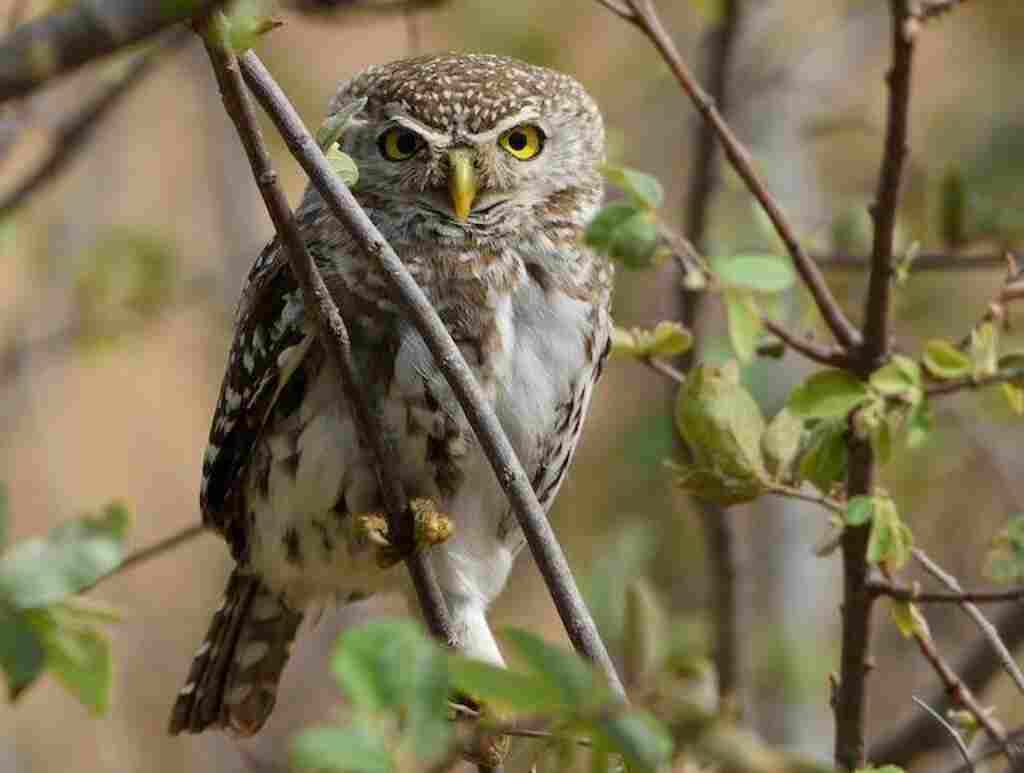Do Owls Come Out During the Day? If you’re a night owl, you might think that owls only come out at night. But what if you spotted an owl in broad daylight? Is it lost? Sick? Or is it just doing its thing? In this article, we’ll explore the truth about whether owls come out during the day and why. Get ready to be enlightened!
Table of Contents
- 1 The Fascinating World of Owl Behavior
- 2 The Importance of Understanding Owl Behavior
- 3 An Exploration of Owl Activity Patterns
- 4 Owl Species That Are Active During the Day
- 5 The Challenges Faced by Daytime Owls
- 6 Owls: Nocturnal or Diurnal?
- 7 Why Some Owls Come Out During the Day
- 8 Owl Species That Are Active During the Day
- 9 The Challenges Faced by Daytime Owls
- 10 Recap of Key Points
- 11 Importance of Understanding Owl Behavior for Conservation Efforts
- 12 Fascinating Insights into Owl Behaviors
- 13 FAQs: Do Owls Come Out During The Day?
- 13.1 What does it mean if you see an owl during the day?
- 13.2 Is it good or bad to see an owl?
- 13.3 What time of day do most owls hunt?
- 13.4 What time of day do you hear owls?
- 13.5 Is it good to have owls around your house?
- 13.6 What are the signs of seeing an owl?
- 13.7 What happens when an owl visits you?
- 13.8 What to do if you see an owl?
- 13.9 What does it mean when an owl is hooting outside your house?
- 13.10 What month are owls most active?
- 13.11 When you hear an owl during the day?
- 14 Conclusion
- 15 Author
The Fascinating World of Owl Behavior
For centuries, humans have been captivated by the fascinating creatures that are owls. With their unique physical characteristics and elusive behavior, they have become a symbol of mystery and wisdom. Most people believe that owls are strictly nocturnal creatures, only coming out to hunt at night.
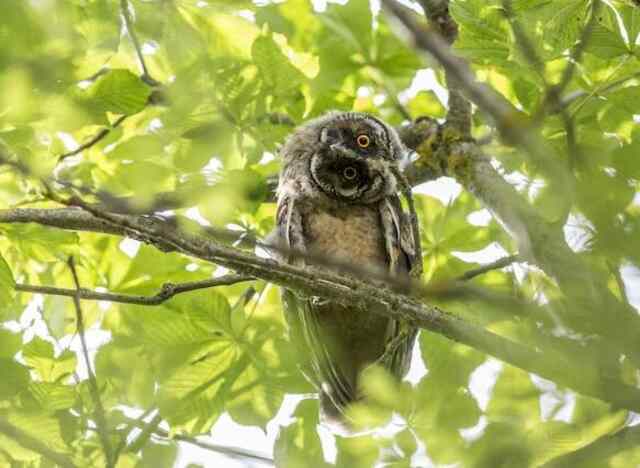
The Importance of Understanding Owl Behavior
Studying owl behavior is important for several reasons. Owls play a vital role in many ecosystems as predators that help maintain balance within food chains.
They also serve as indicators of environmental health, since they rely on healthy habitats to survive. Understanding when and where different owl species are active can help conservationists make informed decisions about how best to protect them.
In addition, understanding owl behavior can also help us better appreciate these amazing creatures. Despite their nocturnal habits, many owls have adapted unique features such as asymmetrical ears and facial discs that allow them to hunt in complete darkness with incredible accuracy.
An Exploration of Owl Activity Patterns
While it is true that most owl species are nocturnal hunters, there are several reasons why some species might venture out during daylight hours.
One reason is hunting success rate; if prey is more abundant during the day or if competition from other predators is lower than at night, some owls may switch their activity patterns accordingly.
Another factor influencing daytime hunting might be related to weather conditions or changes in habitat quality – especially in environments like boreal forests, where light levels fluctuate throughout the year due to latitude or seasonal factors like snow cover.

Owl Species That Are Active During the Day
While most owl species are nocturnal, there are several species known to be active during the day. These daytime hunters typically have larger eyes and more muted plumage than their nocturnal counterparts, as they do not need the same level of camouflage to hide from prey or predators in low light conditions.
Some examples of daytime owls include the snowy owl, northern hawk-owl, short-eared owl, burrowing owl, and great gray owl. Each of these species has unique characteristics that make them adapted to hunting during daylight hours.
For example, the snowy owl has a keen sense of sight that allows it to spot prey from miles away on Arctic tundra habitats, while northern hawk-owls rely on their agility and speed while hunting in open boreal forests.
The Challenges Faced by Daytime Owls
Despite the advantages they possess as daytime hunters, these owls still face challenges unique to their behavior patterns. Increased exposure to predators like hawks and eagles is one such challenge, since these birds are also active during daylight hours.
In addition, since many prey species are more active at night, daytime owls may have lower hunting success rates than their nocturnal counterparts.
To overcome these challenges, daytime owls have developed several unique adaptations, such as aggressive defense tactics against other birds or ground-dwelling mammals using vocalizations or physical displays.
Burrowing owls have even been known to live in underground burrows, where they can avoid predation altogether.
Understanding when and why some owls come out during the day is an important aspect of appreciating and protecting these amazing creatures.
By studying owl behavior patterns, we can better appreciate their role within our ecosystems while also working towards conservation efforts needed to protect them for future generations.
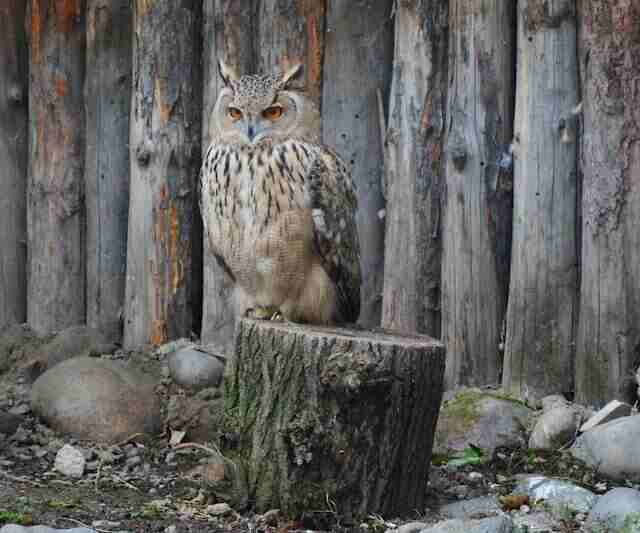
Owls: Nocturnal or Diurnal?
Explanation of Nocturnal and Diurnal Animals
To understand whether owls come out during the day, it’s important to first define what is meant by “nocturnal” and “diurnal” animals. Nocturnal animals are those that are primarily active during the night, while diurnal animals are active during the day.
This division is based on factors such as feeding habits, predator avoidance, and temperature regulation. In general, nocturnal animals tend to have adaptations that allow them to navigate in darkness, such as enhanced senses of smell, hearing or sight.
They also tend to have physical characteristics like large eyes with a high concentration of light-sensitive cells and a reflective layer behind them called the tapetum lucidum. This allows them to gather as much light as possible in low light conditions.
In contrast, diurnal animals typically have adaptations that help them navigate their environments during daylight hours. They may have strong legs for running or jumping, keen eyesight adapted for detecting movement at great distances, and color vision optimized for distinguishing among different hues.
Common Belief That Owls Are Strictly Nocturnal
It’s commonly believed that all owl species are strictly nocturnal – only coming out at night – but this isn’t entirely accurate. While many species do primarily hunt at night and exhibit peak activity levels during darkness hours, some species also hunt during daylight hours.
For example, the northern pygmy owl is known to be more active at dawn and dusk than most other North American owls; while the burrowing owl is a diurnal species native to open grasslands and deserts of North America.
Evidence That Some Owl Species Are Active During The Day
While many owl species are indeed nocturnal hunters due to their well-adapted eyesight and hearing, some species are known to be active during the day. This daytime activity is often driven by factors such as prey availability, competition with other predators for resources, and environmental conditions.
For instance, the snowy owl is a diurnal owl that mostly hunts during the day. During their breeding season in Arctic regions, where there is 24-hour daylight in summer months, they are primarily active during daylight hours.
Similarly, the great gray owl can sometimes become active during daylight hours, when their favored prey – voles – are more abundant above ground. This daytime activity has been documented in areas where heavy snowfall can make it difficult for owls to hunt effectively at night.
Factors That Influence Owl Activity Levels
Whether or not owls come out during the day depends on a variety of factors. In general, habitat conditions and prey availability are two major drivers of owl behavior.
In environments where food sources are scarce or competition with other predators is high, many owl species may expand their hunting time frame to include daytime hours. Environmental factors such as weather conditions also affect owl behavior patterns.
For example, some species of owls may be more likely to hunt during daylight hours on overcast days when light levels are lower than normal. Additionally, individual differences within species may influence activity levels; some individuals may prefer to hunt at night while others prefer dawn or dusk periods.
Other Adaptations That Affect Owl Activity
In addition to environmental and behavioral factors that influence whether owls come out during the day or stick strictly to nocturnal activity patterns, physical adaptations also play a role in these birds’ behavior patterns. For example:
- Some owl species have more pronounced ear tufts, which they use for communication displays rather than hunting
- Some species possess specialized feathers that enable them to move noiselessly while flying through the air.
- Owls’ eyes contain high concentrations of light-sensitive cells, which allow them to see in low-light conditions
Overall, while many owl species are nocturnal hunters, there are some that exhibit daytime activity patterns as well. Factors such as prey availability, competition with other predators for resources, environmental conditions, and individual differences all play a role in determining when and where owls hunt.
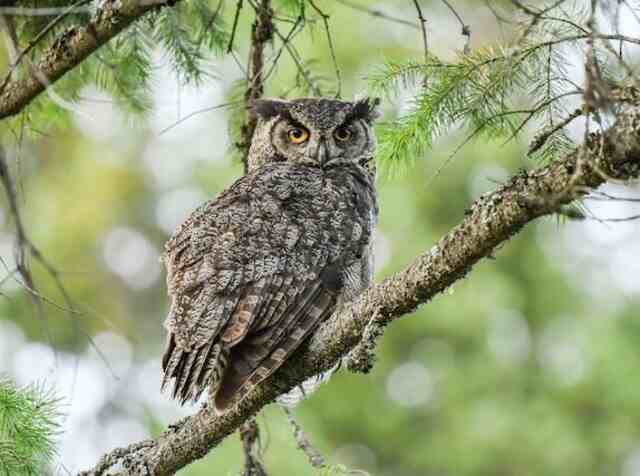
Why Some Owls Come Out During the Day
Owls have long been associated with the night and considered strictly nocturnal creatures. However, this is not always true as some owl species come out during the day to hunt or engage in different activities. In this section, we will explore the reasons why some owls may be active during daylight hours.
Hunting Habits and Prey Availability
The main reason some owl species come out during the day is due to prey availability. Some of these owls feed on snakes, small mammals such as rodents, which are more active during the day.
By being active in the daytime, these owls can take advantage of greater hunting opportunities. One example of a diurnal owl that benefits from these opportunities is the Burrowing Owl.
This owl feeds primarily on insects and small mammals that are more likely to be out during the day. It also has distinct physical adaptations, such as long legs that allow it to chase its prey on foot.
Competition with Other Predators for Food Sources
Some nocturnal predators such as foxes and raccoons can also hunt at night, leading to competition for food sources with nocturnal owls. In response, some species of owls have adapted by becoming diurnal hunters. The Northern Pygmy Owl is an example of one such adaptation.
It feeds primarily on small birds but faces competition from other predators at night when many birds are roosting. By hunting during daylight hours instead, it can avoid competition and have a better chance of catching its prey.
Environmental Factors such as Weather and Habitat Changes
Environmental factors such as weather patterns or habitat changes can also influence owl behavior and cause some species to become diurnal hunters temporarily or permanently.
For example, if there is a drought, rodents may be forced to search for food during the day, leading to an increase in daytime activity of owls that feed on them.
Similarly, habitat changes caused by human activities or natural disasters can impact prey distribution and behavior, causing some owl species to adapt and become diurnal hunters.
The Challenges Faced by Daytime Owls
While hunting during the day may offer some benefits, it also presents challenges for daytime owls. One major challenge is the risk of predation from other birds and animals that are active during the day.
In addition, some daytime owls may face a lower success rate in catching their prey due to competition with diurnal predators or their own lack of adaptations for hunting in daylight.
How Daytime Owls Adapt to These Challenges
Despite these challenges, some owl species have adapted to successfully hunt during the day. For example, many have developed unique physical adaptations such as long legs or sharp talons that aid them in hunting during daylight hours.
Some species such as the Great Horned Owl have also learned how to use artificial light sources such as streetlamps or car headlights to aid them in finding prey at night when they are more active.
Overall, understanding why some owl species come out during the day is important for conservation efforts and appreciating these fascinating creatures.
By studying their behavior patterns and adaptations, we can better protect them and appreciate their unique survival strategies.

Owl Species That Are Active During the Day
Description of Different Owl Species
Owls are an incredibly diverse group of birds, with over 200 different species found all over the world. While most owl species are nocturnal, there are several that have adapted to be active during the day.
One such species is the burrowing owl, which is found in North and South America. These owls are small, with a height of only around 10 inches, and they are known for their distinctive long legs that help them to navigate through their underground burrows.
Another daytime owl species is the short-eared owl, which is found in Europe, Asia, North America and South America. These medium-sized owls stand at around 16 inches tall and have yellow eyes and ear tufts that give them a distinctive appearance.
They can often be seen flying low over open fields or marshy areas during daylight hours. The northern hawk-owl is another daytime owl species that inhabits boreal forests in North America and Europe.
These owls have long tails and wingspans of up to two feet. They are known for their aggressive hunting behavior, snatching prey like rodents, birds and insects out of the air as they fly by.
Examples of Owls That Are Known to Be Active During the Day
One example of an owl species that is active during the day is the great horned owl, which is found throughout North and South America. Great horned owls are large birds with a wingspan of up to five feet across.
They are known for their distinctive ear tufts that resemble horns on top of their heads. While these birds primarily hunt at night under normal conditions, they have been known to hunt during daylight hours when food sources are scarce. Another example of a daytime owl species is the snowy owl.
These majestic birds are found in the Arctic regions of North America, Europe and Asia. They have pure white feathers that help them blend in with their snowy habitat, and they are often seen hunting during the day, particularly during the breeding season.
The barn owl is yet another species of owl that can be active during the day. These owls are found all over the world, and they are known for their distinctive heart-shaped faces that help to funnel sound towards their ears.
Barn owls hunt primarily by sound rather than sight, allowing them to locate prey even in complete darkness. However, they have also been known to hunt during daylight hours when food sources are limited.
here’s a table for Owl Species That Are Active During the Day:
| Species Name | Common Name | Geographic Range |
|---|---|---|
| Asio flammeus | Short-eared Owl | Worldwide |
| Bubo africanus | Spotted Eagle-Owl | Africa |
| Bubo bubo | Eurasian Eagle-Owl | Europe and Asia |
| Bubo lacteus | Verreaux’s Eagle-Owl | Africa |
| Glaucidium brasilianum | Ferruginous Pygmy-Owl | South and Central America |
| Megascops kennicottii | Western Screech-Owl | North America |
| Micrathene whitneyi | Elf Owl | North and Central America |
| Strix aluco | Tawny Owl | Europe and Asia |
| Strix uralensis | Ural Owl | Europe and Asia |
Please note that this list is not exhaustive and there may be other owl species that are active during the day.
Unique Characteristics and Behaviors of These Daytime Owls
Daytime owls have adapted unique characteristics and behaviors that allow them to thrive under conditions where most other owl species would struggle. For example, burrowing owls are able to navigate through complex underground tunnel systems in order to escape from predators like coyotes or foxes.
Short-eared owls have a unique flying style that allows them to hover in place for several seconds at a time as they scan the ground below for prey. Northern hawk-owls also have a distinctive hunting behavior; instead of waiting for prey like most nocturnal owls do, these birds will actively pursue their quarry through the air.
Overall, daytime owl species offer a fascinating glimpse into the diversity and adaptability of these incredible birds. By studying their behavior and characteristics, scientists can gain valuable insights into how different species cope with changing environmental conditions over time.
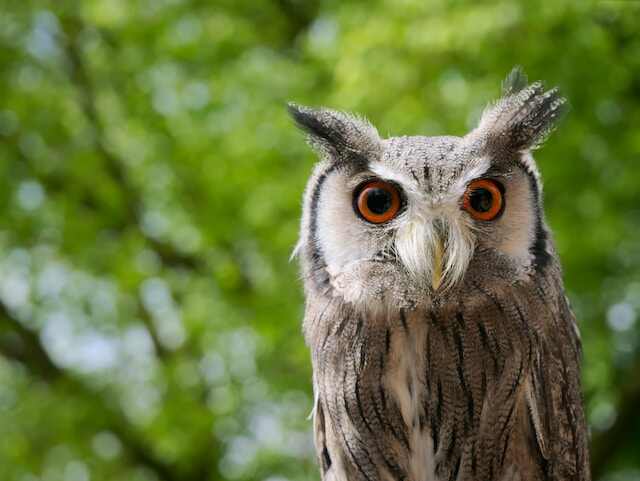
The Challenges Faced by Daytime Owls
Predation risks from other birds and animals
Daytime owls face a variety of predators, which can make it difficult for them to survive. Common predators include hawks, crows, snakes, and even other owls.
Because owls are not equipped to defend themselves against these animals, they must rely on their agility and stealth to avoid being caught. One way that daytime owls try to avoid predation is by staying hidden in trees or bushes during the day.
They may also fly low to the ground or stay close to cover while hunting. Some owl species have even been known to mimic the calls of other birds in order to deceive potential predators.
However, despite these adaptations, many daytime owls still fall victim to predation. In fact, some studies suggest that the mortality rate for daytime owls is higher than that of nocturnal owls due to increased exposure.
Impact on their hunting success rate
Another challenge faced by daytime owls is their ability to hunt successfully. Unlike nocturnal owls who have adapted night vision and heightened hearing abilities for hunting in low light conditions, daytime owl species are not specifically adapted for hunting during daylight hours.
This means that while they may be able to locate prey visually more easily due to increased light availability during the day – they still have diminished senses compared with nocturnal counterparts, making it harder for them.
The impact of predation risks and challenges in hunting success rates increases stress levels among these diurnal creatures, leading them towards a lower population density over time.
How they adapt?
Despite these challenges, several adaptations made by daytime owl species allow them survival even with such difficulties. Some species have evolved special plumage patterns or colors which provide effective camouflage from potential predators. Others have developed keen eyesight, helping their hunting during daylight.
In addition, some species have even modified their hunting technique in order to find prey more efficiently. For instance, some daytime owl species hover over open areas and scan the ground for movement before swooping down to catch their prey.
While these adaptations may help daytime owls survive, the challenge of predation risks and reduced hunting success rates are always present. It is a delicate balance that requires constant adaptation and perseverance from these incredible creatures.
Daytime owls face significant challenges due to their unique behavior patterns. Predation risks from other birds and animals can make it difficult for them to survive, while diminished hunting success rates add further pressure on populations.
Despite these challenges , several adaptations help them adapt over time, allowing them to hunt and evade predators more effectively.
Understanding these challenges faced by daytime owl species is critical in ensuring their long-term survival in today’s changing environment, where increasing urbanization is threatening ecosystems everywhere.
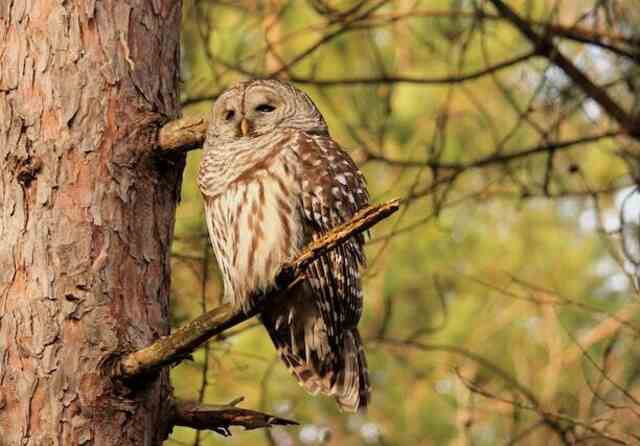
Recap of Key Points
Throughout this article, we have explored the common belief that owls are nocturnal creatures and the evidence that suggests otherwise. We have discussed the reasons why some owl species may come out during the day and examined the challenges they face when doing so.
We looked at different owl species that are active during the day, highlighting their unique characteristics and behaviors. One key takeaway from this article is that not all owls are strictly nocturnal.
While many owl species do prefer to hunt and be active at night, others may shift their activities to daytime hours depending on various factors such as prey availability or environmental conditions.
It’s important for us to understand these behaviors if we want to effectively conserve these fascinating creatures.
Importance of Understanding Owl Behavior for Conservation Efforts
Understanding owl behavior is critical for conservation efforts. Owls play an important role in our ecosystems by controlling rodent populations and serving as indicators of ecosystem health. However, many owl species are facing threats such as habitat loss, climate change, and human disturbance.
By understanding when and where different owl species are active, we can better protect their habitats and reduce our impact on them.
For example, if we know that a particular owl species is active during the day in a specific area, we can take steps to minimize disturbance during those hours or protect crucial habitat areas from development or destruction.
Fascinating Insights into Owl Behaviors
Learning about owls coming out during the day provides us with fascinating insights into their lives. For example, some daytime-owl species have unique physical adaptations such as forward-facing eyes which give them excellent depth perception – making them effective hunters even in broad daylight.
Additionally, researchers studying daytime-owl behavior have discovered interesting hunting strategies used by these diurnal raptors – such as using sunlight to blind their prey or nesting near water sources to take advantage of daylight feeding opportunities.
Overall, understanding the fascinating behaviors of these creatures provides us with a glimpse into their world and highlights the importance of our role in their conservation.
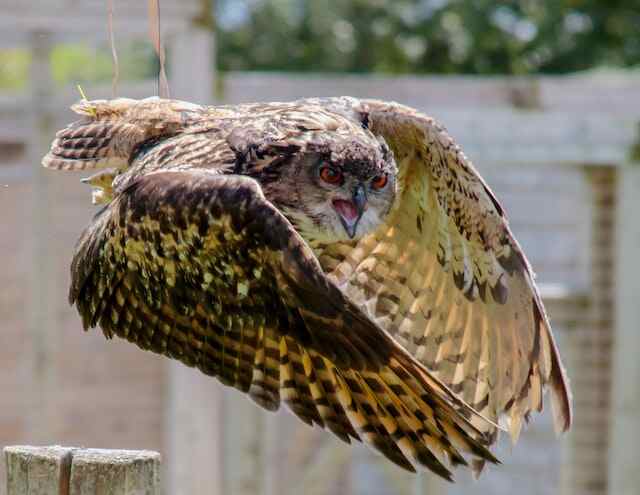
FAQs: Do Owls Come Out During The Day?
What does it mean if you see an owl during the day?
If you see an owl during the day, it doesn’t necessarily mean anything significant. Some species of owls are active during the daytime, and it’s not uncommon to spot them in daylight hours.
Is it good or bad to see an owl?
In many cultures, owls are associated with wisdom, protection, and good luck. So, seeing an owl can be considered a positive sign. However, some people believe that seeing an owl is an omen of bad luck or death.
What time of day do most owls hunt?
Most owl species are nocturnal and hunt at night. However, some owls, such as the snowy owl, are diurnal and hunt during the day.
What time of day do you hear owls?
You are most likely to hear owls hooting during the night, as this is when they are most active. However, some owl species may also call during the day.
Is it good to have owls around your house?
Yes, having owls around your house can be beneficial as they can help to control rodent populations. Owls are natural predators of mice, rats, and other small mammals.
What are the signs of seeing an owl?
The signs of seeing an owl may include hearing their hooting or screeching calls, seeing them perched in a tree or flying overhead, or finding owl pellets (indigestible remains of prey) on the ground.
What happens when an owl visits you?
If an owl visits you, it may be a sign of wisdom, protection, or good luck. However, some people believe that an owl visit is a warning of impending danger or death.
What to do if you see an owl?
If you see an owl, the best thing to do is to observe it from a safe distance and avoid disturbing it. Owls are wild animals and can be dangerous if provoked or threatened.
What does it mean when an owl is hooting outside your house?
If an owl is hooting outside your house, it may be searching for a mate, establishing territory, or communicating with other owls. In some cultures, it is believed that hearing an owl hoot outside your house is a sign of good luck.
What month are owls most active?
Most owl species are active throughout the year, but their activity levels may vary depending on the breeding season and availability of prey. Some species, such as the snowy owl, are more active during the winter months.
When you hear an owl during the day?
If you hear an owl during the day, it may not necessarily be a cause for concern. Some owl species, such as the burrowing owl, are active during the daytime and may be more vocal during these hours. However, it’s best to observe them from a safe distance and avoid disturbing them.
Conclusion
In conclusion, while owls are primarily nocturnal animals, some species do occasionally come out during the day. This can be due to a variety of factors, such as food availability, nesting behaviors, or disturbances to their usual routines.
It’s important to remember that owls are fascinating creatures with complex behaviors and adaptations, and observing them in their natural habitats can provide valuable insights into their lives and the ecosystems they inhabit.
Whether you’re a casual observer or a dedicated birdwatcher, encountering an owl during the day can be a rare and memorable experience.

